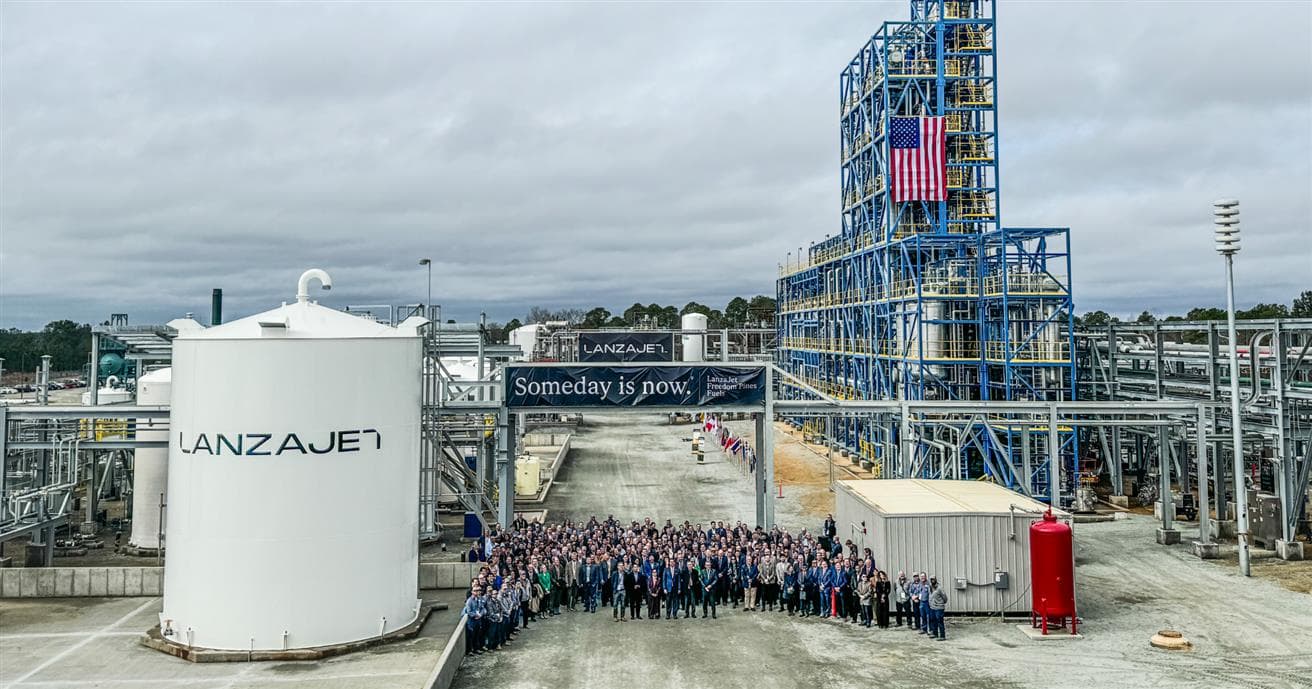In 2020, Suncor was one of the early investors in LanzaJet’s alcohol-to-jet (ATJ) SAF technology and their Freedom Pines Fuels SAF commercial demonstration facility along with LanzaTech, Mitsui & Co. and Shell. The plant also received funding from the Microsoft Climate Innovation Fund, Breakthrough Energy, British Airways and All Nippon Airways.
“A number of years ago, Suncor chose to be a founding investor of LanzaJet because we believed that this technology presented a long-term business opportunity and also had the potential to significantly reduce aviation emissions,” said Mark Townley, Senior Vice President, Supply, Trading & Optimization, Downstream.
The technology used at the LanzaJet facility will reduce greenhouse gas emissions from aviation by more than half when produced from a variety of sustainable feedstocks, such as agricultural waste, municipal solid waste, energy crops, carbon captured from industrial processes, and more.
The facility is nearly mechanically complete and expected to be commissioned in the next three months.
“Once the Freedom Pines Fuels facility is fully operational, it will play a critical role in scaling sustainable aviation fuel production and bringing lower-cost sustainable fuels to market — providing customers with a product they want,” adds Mark.
Located in Soperton, Georgia, U.S., LanzaJet Freedom Pines Fuels will produce 10 million gallons of SAF and renewable diesel per year from low carbon, sustainable, and certified ethanol which meets U.S. and global standards. This will be enough SAF to fuel more than 1,300 Boeing 737-800 jets per year.
“Since 2006, Suncor has been a part of Canada’s renewable liquid fuels industry. As the operator of Canada’s largest ethanol plant, coupled with our goal to decarbonize our base business and achieve net-zero emissions by 2050, we saw potential for us to invest in this emerging market to continue to meet customer needs,” says Mark.


